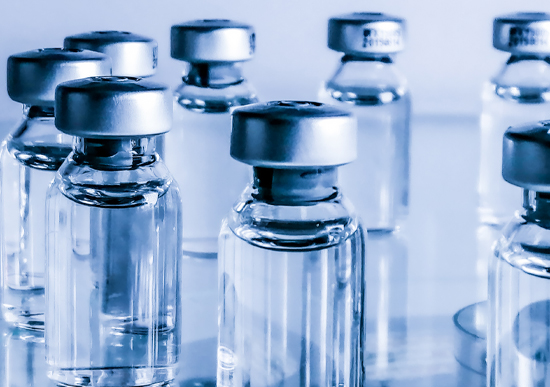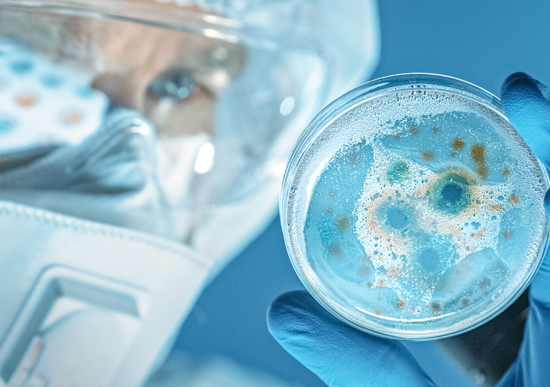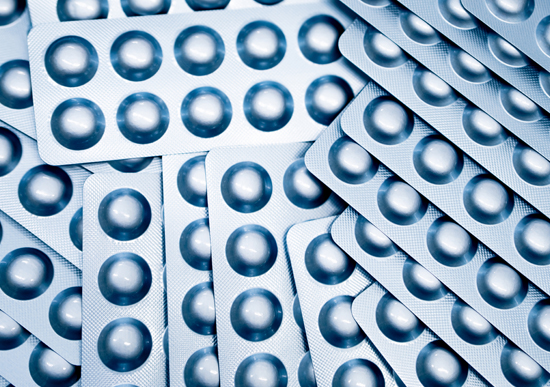Bioburden Monitoring for Primary-Packaging Sterile Manufacturing
[Authors note: This article represents my personal views (as of December 2024), as supported, in part, by the references cited herein, and as such it is not the intended to be representative of the views and/or policies and/or practices taken by of my employer. All information provided in this document is provided ‘as is’ without warranty of any kind. Furthermore, my employer makes no representations or warranties regarding the accuracy or completeness of the contents of this article.]
Did you know that the revised European Union GMP Annex 1 has increased regulatory requirements for pharmaceutical companies and their suppliers? Let’s delve into how this impacts primary packaging components prior to sterilization.
The Role of Primary Packaging
 Primary packaging is one aspect of the container–closure system, which is the sum of packaging components that together contain and protect the dosage form. The container–closure system also includes secondary packaging (e.g., cartons, trays) that may or may not have a functional aspect and are out of scope.
Primary packaging is one aspect of the container–closure system, which is the sum of packaging components that together contain and protect the dosage form. The container–closure system also includes secondary packaging (e.g., cartons, trays) that may or may not have a functional aspect and are out of scope.
Primary packaging plays a critical role in drug safety. Primary-packaging components are components that are in direct contact with, or have the potential to come directly into contact with, the drug product, such as:
- Plastic and aluminum films
- Glass
- Plastic or elastomer stoppers
- Aluminum or plastic tubing
- Containers (and their closures)
Primary-packaging components used in sterile manufacturing are divided into two main categories:
- Protection-oriented packaging: These have potential direct product-contact and are designed to protect the drug from external influences; examples are vials and stoppers, which have no direct administration function but maintain content integrity.
- Devices: These have potential direct product-contact and are actively involved in the delivery of the medication; typical examples are syringes and applicators used for administration of the medication.
The distinction between these two types of primary-packaging components is important for application and regulatory requirements.
Regulatory Guidelines and Their Implications
As per the statements given in the U.S. Pharmacopeia, primary packaging can be a source of microbial contamination, and their initial quality, storage conditions, preparation, and handling procedures should be considered (1).
GMP Annex 1 states that the manufacture of sterile products is subject to special requirements to minimize the risk of microbial, particulate and endotoxin/pyrogen contamination. Section 2.1 states that “the following key areas should be considered: iv. Packaging materials should be adequately controlled and tested to ensure that level of bioburden and endotoxin/pyrogen are suitable for use” (2). Also according to the principles of GMP Annex 1, monitoring systems should be applied to demonstrate that the risk-based controls are being implemented and that the quality expectations are being met.
It is a clear expectation that sterilization processes (including those using overkill) are supported by a bioburden-monitoring program (3). Monitoring is essential to meet regulatory requirements and quality standards, such as those set by the U.S. Food and Drug Administraion (FDA), European Medicines Agency (EMA) and International Organization for Standardization (ISO), and to ensure sterility is maintained throughout its lifecycle.
Understanding Bioburden and Its Role
Bioburden is the total number of microorganisms associated with a particular item such as primary-packaging components. Bioburden is a decisive factor in the manufacture of sterile products. In this context, sterility means that the probability of the presence of viable microorganisms after sterilization is no greater than one in one million (10-6). Achieving this sterility assurance level is based on two pillars:
- Control and continuous monitoring of hygiene conditions throughout the manufacturing process
- The use of a scientifically validated sterilization process
Bioburden is considered a threat not only due to an unsuccessful sterilization process, but also the possible availability of residual substance such as allergens, endotoxins and exotoxins.
With respect to endotoxins, the sterilization process itself poses certain risks. Endotoxins can resist sterilization processes and cause health complications if they remain in the drug. This stresses the importance of controlling the incoming levels of endotoxin including from the primary packaging. Both the validation phase of the sterilization process and the batch release process requires endotoxin testing to detect and quantify the presence of these substances to ensure the safety of the drug.
Risk Assessment
 In the contamination control strategy (CCS), manufacturers must state and consider their own strategies and controls for all steps in the sterile manufacturing process, including the incoming primary-packaging components.
In the contamination control strategy (CCS), manufacturers must state and consider their own strategies and controls for all steps in the sterile manufacturing process, including the incoming primary-packaging components.
Risk assessments are the foundation of the CCS. Therefore, the first step is a sterility-assurance risk assessment to define bioburden control measures and critical control points.
Risk assessment extends from the supplier qualification to the point where the packaging is sterilized (either terminal or dry-heat sterilized and then aseptically filled). Suppliers can provide untreated components and ready-to-sterilize (RTS) components. Less bioburden data from the supplier is often known for untreated components, in contrast to RTS materials. For these untreated components, the supplier needs specialized cleaning or controls that meet the risk assessment requirements.
Monitoring points should be considered at the points in the process either immediately before or after a potential bioburden-reduction process and immediately prior to sterilization in order to provide confidence that the terminal sterilization step will effectively reduce the bioburden or that aseptic filling begins with an untainted bulk (1, 4).
During the supplier qualification, suppliers should demonstrate that starting-packaging components meet established criteria and purchasing specifications (5).
Washing processes prior to terminal sterilization or depyrogenation are developed to ensure adequate reduction of incoming contamination. The risk of microbial and endotoxin contamination should be considered in the development of cleaning validation protocols (6).
The Importance of a Testing Program
The primary purposes of maintaining a testing program are to:
- Ensure the microbial load remains acceptable throughout the process
- Assure the item meets the required acceptable limit for bioburden
- Evaluate the effectiveness of all controls
- Manage risks to drug product quality and safety
The program should provide data for trending to evaluate the collective effectiveness of control measures to ensure GMP compliance, detect deviations and drive continuous improvement. A program will include documented and justified sampling points, sample size and frequency, and test methods. The number of samples is statistically determined and specified in a sampling plan (7).
The monitoring frequency is determined on a case-by-case basis. It depends on the sterilization process, historical data, contamination risk and the release process.
Inadequate monitoring results in undetected contamination or in early signals of out-of-trends and impending contamination risks being missed. Conversely, excessive monitoring can be burdensome, uninformative and costly and may introduce contamination to the process (8). Additionally, the risk of false positives increases, resulting in unneeded investigations and delays of product release.
For components with a potential to introduce contamination, each lot must to be tested prior to use (9).
In line with terminally sterilized products (2), monitoring at intervals is possible if overkill parameters are used and a validated cleaning is performed prior to sterilization.
For certified packaging, the purchasing specifications and test results are controlled on the Certificate of Analysis. However, global regulatory authorities expect the drug product manufacturer to perform confirmation testing periodically to verify the results provided on the supplier Certificate of Analysis (9).
Identification: Know Your Enemy
Through a detailed and accurate identification program, shifts in the microbial flora or the predominance of specific organisms are observed. It helps to identify the source of contamination during excursions and to take appropriate preventive measures to reduce the risk of future contamination.
For alert and action-limit excursions and at parametric release, any organisms found during bioburden testing are identified and evaluated. The characteristics (e.g., by-products as toxins) of the recovered organism are considered to determine the impact on product quality and the effectiveness of the sterilization process. Similar to drug-product bioburden excursions, endotoxin/pyrogen levels are monitored as appropriate (2).
Setting Appropriate Limits
Establishing appropriate acceptance limits for packaging components is important for untreated and RTS components. Limits are set to ensure the product quality and to be consistent with presterilization bioburden reduction process capability. However, high limits should not be justified by the capacity of the sterilization process or any bioburden-reduction step prior to sterilization (10).
 Appropriate action limits are determined during validation studies for the specific sterilization process. These studies include sampling and testing of packaging to quantify the microbial load and evaluate the effectiveness of the sterilization process and control measures.
Appropriate action limits are determined during validation studies for the specific sterilization process. These studies include sampling and testing of packaging to quantify the microbial load and evaluate the effectiveness of the sterilization process and control measures.
Gamma irradiation using the ISO 11137 VDmax25 method has a maximum bioburden action limit of 1,000 CFU/product unit (11).
Dry heat (at >220 °C) for a validated time is often used for both sterilization and depyrogenation of heat-resistant container components. These depyrogenation cycles are overkill cycles and demonstrated a 3-log reduction in heat-resistant endotoxins (10). It may eliminate the need for the bioburden monitoring, and endotoxin monitoring is sufficient (3).
The EMA guideline for sterilization of primary containers recommends a bioburden level of 100 CFU (per 100mL) prior to steam sterilization cycles (including overkill cycle) (10).
Overkill cycles cannot always be applied for heat-labeled products or items. In that case, sterilization cycles are designed based on heat resistance and population of the bioburden recovered organisms. A safety margin during the cycle development is included, inversely correlated to the frequency and magnitude of the bioburden-monitoring program (12).
In addition to dry heat, steam sterilization and irradiation, there is also gas sterilization, for example, with ethylene oxide. Once again, bioburden prior to the gas sterilization process should be minimized, and limits are established, as described by ISO standards and the referenced EMA directive.
Alert limits are used for trending purposes and based on historical data.
If components are mixed as a sample preparation to perform the enumeration test, as described in chapter 2.6.12 of the European Pharmacopoeia, the limit should be expressed as CFU per number of components tested.
The Need for Regular Data Review
Periodic data review is required to evaluate the state of control and to identify the occurrence of adverse trends. An adverse trend includes:
- Increasing number of excursions from action limits or alert levels
- Successive excursions from alert levels
- Regular isolated excursions from action limits
- Changes in the type and number of microbial flora and the predominance of specific organisms (attention should be paid to recovered organisms that may indicate a loss of control, e.g., spore-forming microorganisms)
At adverse trends, adjustments and improvements are made, and the investigation determines if there is a loss of control and risk of impacting product quality.
Conclusion
Bioburden monitoring of primary-packaging components is crucial for ensuring product safety and quality.
A risk-based approach is essential, as it enables customized control strategies that address specific risks associated with different process steps and sterilization methods.
Bioburden limits should not rely solely on the sterilization process’s capacity to eliminate contaminants. Instead, a comprehensive control strategy is implemented, incorporating periodic reviews of bioburden data. Reviews are for evaluating the state of control and identifying any adverse trends, thereby ensuring continuous improvement and maintaining high standards of product safety.
Conferences
- U.S. Pharmacopieal Convention. General Chapter <1115> Bioburden Control of Nonsterile Drug Substances and Products in USP41-NF36. USP. Published online 2024:1-7.
- European Commission. The Rules Governing Medicinal Products in the European Union, Volume 4, EU Guidelines for Good Manufacturing Practice for Medicinal Products for Human and Veterinary Use. 2022;4:1-59.
- Moondra S, Raval N, Kuche K, Maheshwari R, Tekade M, Tekade RK. Sterilization of Pharmaceuticals: Technology, Equipment, and Validation. Vol 2. Elsevier Inc.; 2018. doi:10.1016/B978-0-12-814421-3.00014-2.
- Sandle T. A new Standard for Bioburden Testing: USP Chapter in Development. GMP Rev. 2013;12(3):10-12.
- World Health Organization. Annex 9: Guidelines on Packaging for Pharmaceuticals. WHO Tech Rep Ser. 2002;(902):120-153.
- Stuggins G, Sharabaroff A, Semikolenova Y. Annex 15: Qualification and Validation. Eur Comm. 2015;4(March):47-70. Doi:10.1596/9780821398036_bm
- European Comission. Annex 8: Sampling of Starting and Packaging Materials. Eudralex - Vol 4 Good Manuf Pract. Published online 2014:105-106. Https://ec.europa.eu/health/sites/health/files/files/eudralex/vol-4/pdfs-en/anx08_en.pdf/.
- Parenteral Drug Association. Technical Report No. 90: Contamination Control Strategy Development in Pharmaceutical Manufacturing. PDA, Inc.:Bethesda, MD; 2023.
- U.S. Food and Drug Administration. Title 21—Food And Drugs Chapter I—Food and Drug Administration, Subchapter C - Drugs: General Part 211 — Current Good Manufacturing Practice For Finished Pharmaceuticals, Subpart E - Control of Components and Drug. Department of Health and Human Services: 2019. Https://www.accessdata.fda.gov/scripts/cdrh/cfdocs/cfcfr/cfrsearch.cfm?Cfrpart=58&showfr=1&subpartnode=21:1.0.1.1.23.1
- European Medicines Agency. Guideline on the Sterilisation of the Medicinal Product, Active Substance, Excipient and Primary Container. EMA: 2019;31(March).
- European Committee for Electrotechnical Standardization. EN ISO 11137-1:2015: Sterilization of health care products - Radiation - Part 1: Requirements for development, validation and routine control of a sterilization process for medical devices. iTeh Standards. Published online 2018.
- Parenteral Drug Association. Technical Report No. 1: Cycle Design, Development, Qualification and Ongoing Control. PDA, Inc.: Bethesda, MD; 2007:26-28.



